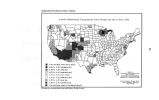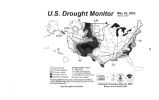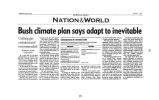| OCR Text |
Show 70 JIM MATHESON coawmKfi: 2NC Dis- fwer. UTAH TRANSPORTATION AND INFRASTRUCTURE : OFFICE BUHDING ;', l r . .' I HIGHWAYS ^ NPTHANSTT C( mgreje& of tfje 3Mteb states? Pousse of fttpresentattbe* © Kagfjitigton, BC 20515- 4402 SALT LAX* CITY. UT 84133 Pwwe; ( B01| 544- « 3M FAX: ( 801) Sa « - B9* l wwiv. riOl/ se. oowrnatheson June 3,2002 Randy Inlander, Supervisor Utah Snow Survey Natural Resources Conservation Service 245 N. Jimmy Doolittle Road Salt Lake City, UT 84116 Dear Mr. Inlander Today the House Committee on Science held a Congressional Hearing in Salt Lake City, Utah to discuss issues associated with predicting, preparing for, and responding to drought. While you were unable to attend and participate ill this hearing process, I would like to invite you to submit a response to the following questions to be included in the Committee's record for this hearing. 1. What does the Natural Resources Conservation Service contribute to the public good in the way of drought monitoring? 2. What are the primary differences between drought in the mountainous areas of the West and the remainder of the United States? 3. What can be done to improve water resource management specifically related to drought? 4. What is the current status of drought monitoring and data collection in the NRCS? 5. The National Drought Policy Commission in its May 2000 report to Congress stated five goals, one of which is to " improve collaboration among scientists and managers to enhance the effectiveness of observation networks, monitoring, prediction, information delivery, and applied research and to foster public understanding of and preparedness for drought." What specific initiatives has your agency prepared to respond to this goal and to improve drought monitoring and data collection? 6. The Commission report also recommends that " appropriate federal agencies expand technology transfer of water conservation strategies and innovative water |


























































































